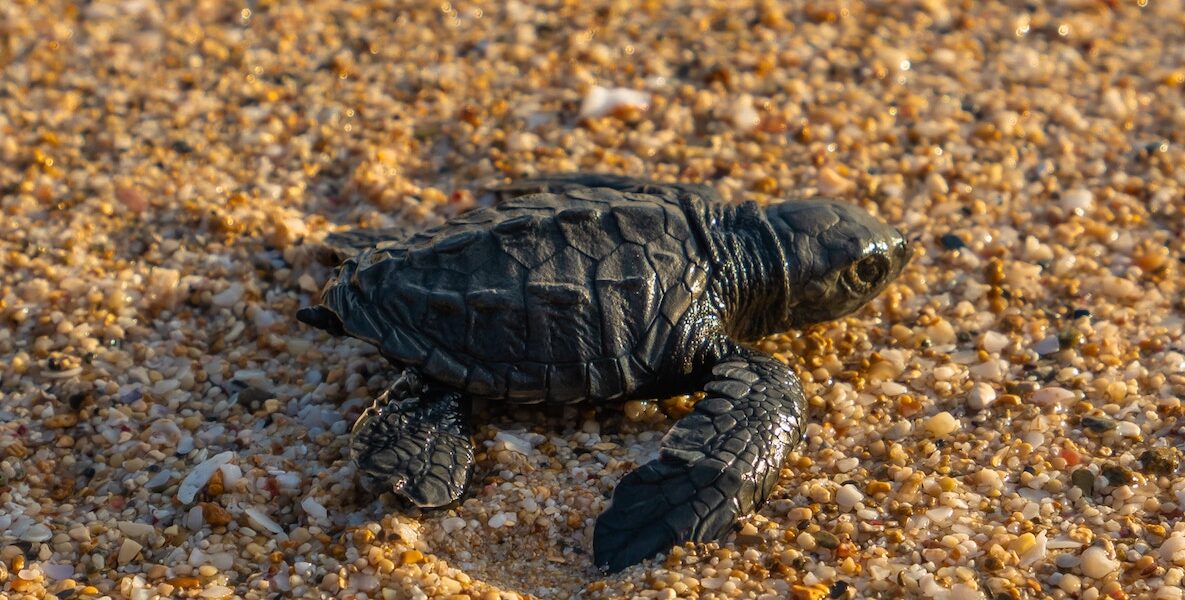By Campbell Howe, Research Intern, The Ocean Foundation
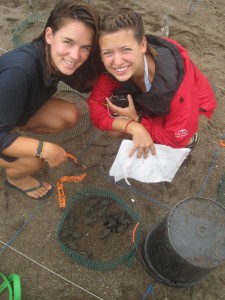
Over the years, The Ocean Foundation has been pleased to host research and administrative interns who have helped us achieve our mission even as they learned more about our ocean planet. We have asked some of those interns to share their ocean-related experiences. Following is the first in a series of TOF intern blog posts.
Interning at The Ocean Foundation set the base for my ocean curiosity. I worked with TOF for three years, learning about ocean conservation efforts and opportunities around the world. My ocean experience before had mainly consisted of visits to the beach and an adoration of any and all aquariums. As I learned more about TEDs (turtle exclusion devices), Invasive Lionfish in the Caribbean, and the importance of Seagrass meadows, I began to want to see it for myself. I started by earning my PADI Scuba License and went diving in Jamaica. I remember clearly when we saw a baby Hawksbill Sea Turtle glide by, effortlessly and peacefully. The time came when I found myself on the beach, 2000 miles from home, facing a different reality.
On my first night patrol I thought to myself, ‘there is no way I make it three more months…’ It was four and a half long hours of unexpectedly hard work. The good news is that prior to my arrival, they had only seen the tracks of a few turtles. That night we encountered five Olive Ridleys as they ascended from the ocean to nest and the nests of seven more.
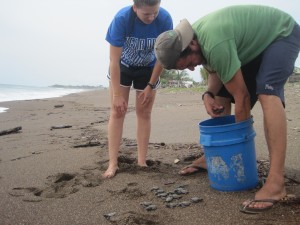
With each nest containing between 70 to 120 eggs, they quickly began to weigh down our backpacks and bags as we collected them for protection until they hatched. After walking the nearly 2-mile beach, 4.5 hours later, we returned to the hatchery to rebury the recovered nests. This grueling, rewarding, ever surprising, physical labor became my life for the next three months. So how did I get there?
After graduating from University of Wisconsin, Madison in 2011, I decided that I would try my hand at ocean conservation at its most fundamental level: in the field. After some research, I found a Sea Turtle Conservation Program called PRETOMA in Guanacaste, Costa Rica. PRETOMA is a Costa Rican non-profit that has various campaigns focused on marine conservation and research around the country. They strive to conserve hammerhead populations in the Cocos Islands and they work with fishermen to maintain sustainable catch rates. People from all over the world apply to volunteer, intern or assist with the field research. In my camp there were 5 Americans, 2 Spaniards, 1 German and 2 Costa Ricans.
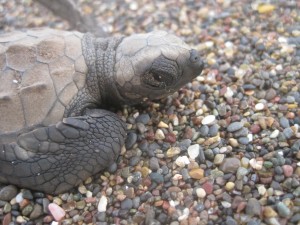
I went down there in late August 2011 as a Project Assistant to work on a remote beach, 19 Km from the closest town. The beach was called Playa Caletas and the camp was wedged between a wetlands reservation and the Pacific Ocean. Our duties included a whole range of tasks: from cooking to organizing patrol bags to monitoring the hatchery. Each night, myself and the other project assistants would take 3 hour patrols of the beach to search for nesting sea turtles. This beach was frequented by Olive Ridleys, Greens and the occasional critically endangered Leatherback.
Upon encountering a track, with all our lights off, we would follow the track that led us to a nest, a false nest or a turtle. When we found a turtle nesting, we would take all of its measurements and tag them. Sea turtles are usually in what is called a “trance” while nesting so they are not as bothered by the lights or small disturbances that may occur while we record the data. If we were lucky, the turtle would be digging its nest and we could more easily measure the final depth of that nest and effortlessly gather the eggs as she laid them. If not, then we would wait by the side as the turtle buried and compacted the nest before heading back to sea. After we returned back to the camp, anywhere between 3 to 5 hours later, we would rebury the nests at the same depths and in a similar structure as they were recovered.
Camp life was no easy living. After standing guard of the hatchery for hours, it was fairly disheartening to find a nest in the far corner of the beach, dug up, with eggs eaten by a raccoon. It was hard to patrol the beach and arrive at a nest that had already been collected by a poacher. Worst of all, was when a fully grown sea turtle would wash up on our beach dying from a gash in their carapace, likely caused by a fishing boat. These occurrences were not infrequent and the setbacks were frustrating for us all. Some of the sea turtles deaths, from the eggs to the hatchlings, were preventable. Others were inevitable. Either way, the group that I worked with became very close and anyone could see how deeply we cared for the survival of this species.
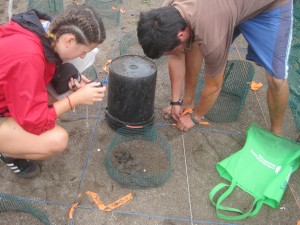
One alarming fact that I discovered after my months working on the beach was how fragile these small creatures were and how much they had to endure to survive. It seemed like almost any animal or natural weather pattern was a threat. If it wasn’t bacteria or bugs, it was skunks or raccoons. If it wasn’t vultures and crabs it was drowning in a fishermen’s net! Even changing weather patterns could determine whether they survived their first few hours. These little, complex, wonderful creatures seemed to have all the odds against them. Sometimes it was hard to watch them make their way to the sea, knowing all that they would face.
Working on the beach for PRETOMA was both rewarding and frustrating. I felt rejuvenated by a large healthy nest of turtles hatching and safely shuffling to the sea. But we all knew that many of the challenges a sea turtle faces are out of our hands. We could not control the shrimpers that refused to use TED’s. We could not lessen the demand for sea turtle eggs sold on the market for food. Volunteer work in the field, does play a critical role—there is no doubt about it. But it is often important to remember that, as with all conservation efforts, there are complexities at multiple levels that must be addressed to enable true success. Working with PRETOMA provided a perspective on the conservation world that I had never known before. I was lucky to have learned all of this while experiencing Costa Rica’s rich biodiversity, generous people and stunning beaches.
Campbell Howe served as a research intern at The Ocean Foundation while completing her history degree at the University of Wisconsin. Campbell spent her junior year abroad in Kenya, where one of her assignments was working with fishing communities around Lake Victoria.
